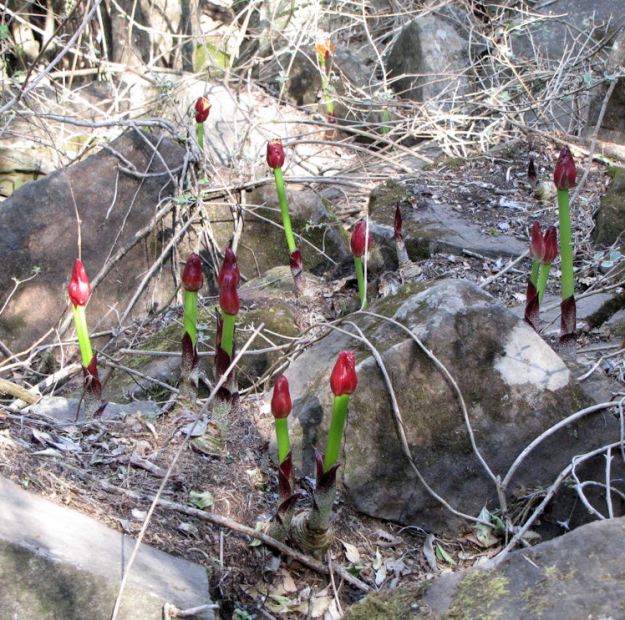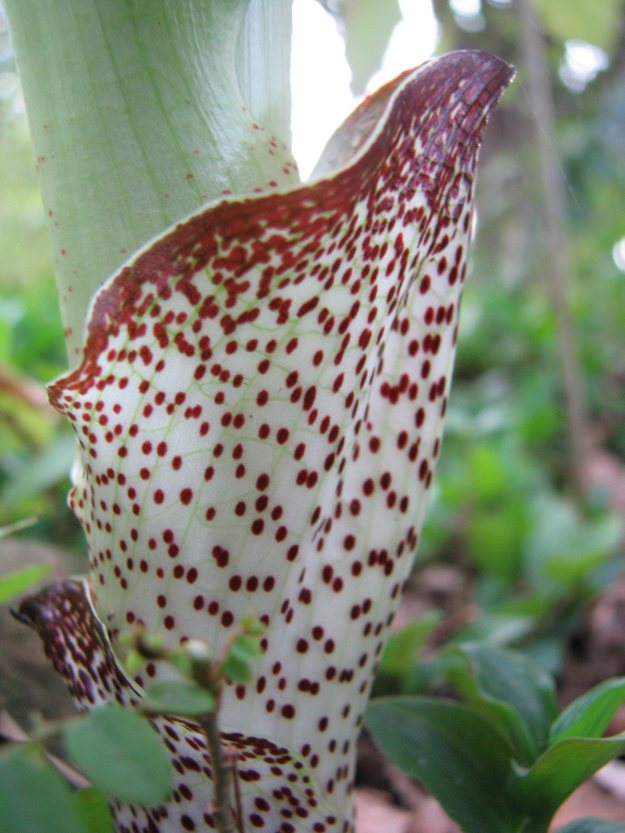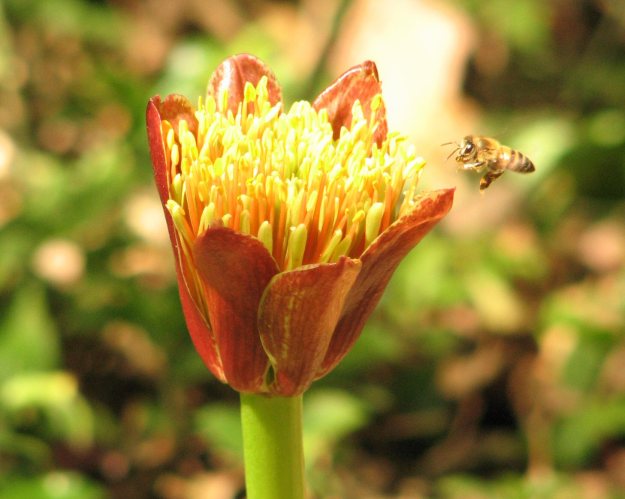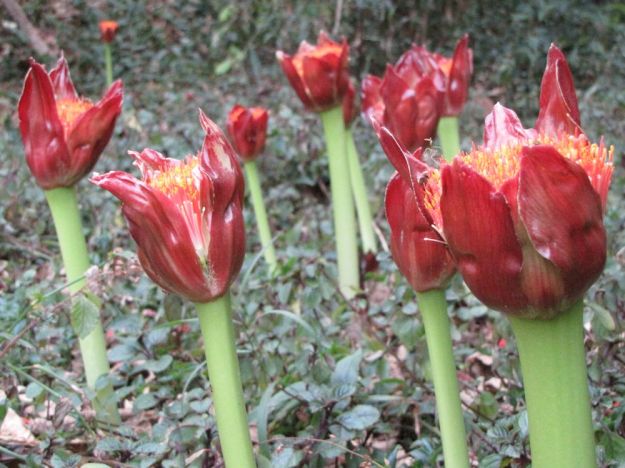Common names: Paintbrush lily, Snake lily, Blood lily (E), Rooikwas, Seeoorglilie (A), umphompo, idumbe-likanhloyile (Z) The name Scadoxus is derived from doxus meaning glory or splendour, and puniceus means crimson, scarlet or purple.
This spectacular lily grows naturally in shady areas in coastal bush, ravines and forest along the east of South Africa, but will also grow in sun in your garden. In early Spring, the young inflorescence, protected by purplish bracts, bursts enthusiastically from the ground. The speckled stem grows to about 50 cm and is a delight if planted in a raised pot to be admired.
The leaves are a shiny bright green and perfect contrast to the red and orange flower. The buds open into large dense heads up to 15cm across with masses of smaller scarlet flowers with bright yellow anthers. Weavers, sunbirds and bees feed on the nectar produced by the flowers.
The fleshy green seeds turn dark red when ripe and are much favoured by birds and monkeys. They often germinate and grow right where they fall next to the parent plant. At every stage of growth, Scadoxus is gorgeous and, while the flower is fabulous, it is worth growing just for the purple spotted stems, glossy green foliage or bunches of bright red berries.
 Scadoxus dies back in winter and the large bulb stores moisture during the dry period. This bulb is poisonous, although a decoction from the roots is taken for coughs in Zulu traditional medicine. It has also been used as part of a medicine taken during pregnancy to ensure a safe delivery.
Scadoxus dies back in winter and the large bulb stores moisture during the dry period. This bulb is poisonous, although a decoction from the roots is taken for coughs in Zulu traditional medicine. It has also been used as part of a medicine taken during pregnancy to ensure a safe delivery.




What an amazing beautiful plant – a friend from East London gave me 6 plants 2 years ago – I was not sure they would like our cold winters but they do. This winter I took them out and replanted them a month ago – they are just coming up now so your blog post was well timed Nikki.
LikeLike
Worthy choice. Lovely plant and sensible too – stays out of sight in winter
LikeLike
Pingback: Dargle Wildlife Sightings – August | Midlands Conservancies Forum